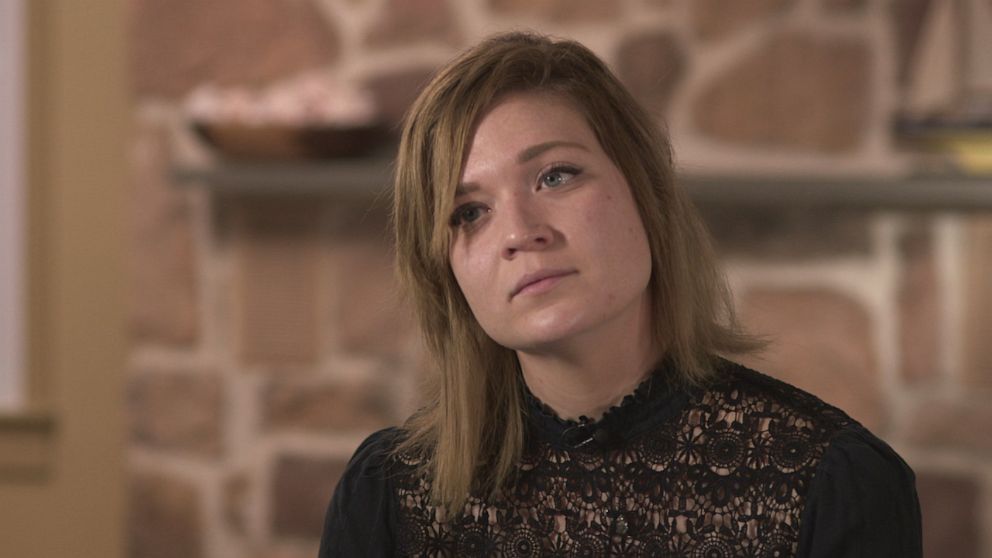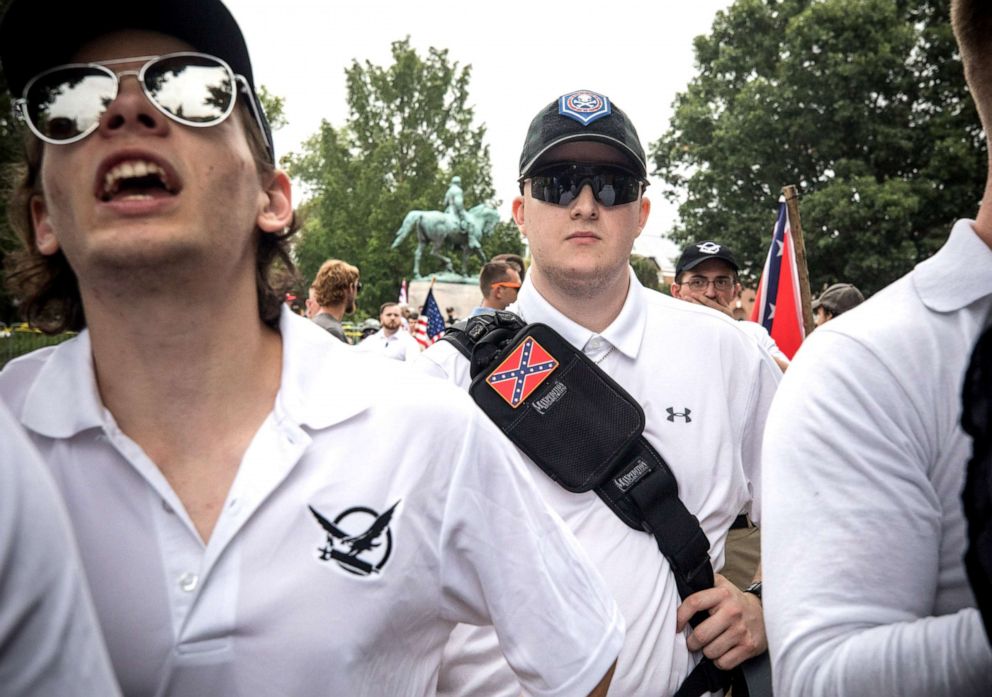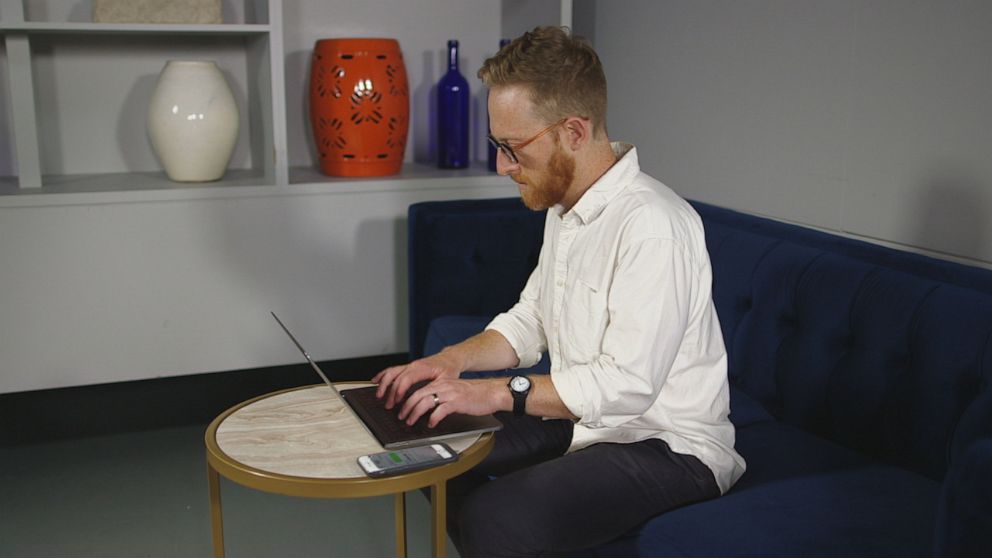Former alt-right member on how hate groups get people to join: 'It was presented as wholesome'
"I never thought of myself as a racist person, but I was," Samantha said.
During her mid-20s, Samantha spent about a year of her life embroiled in a white supremacist hate group.
"I never thought of myself as a racist person, but I was," she said.
Samantha, who asked for her last name not to be used, was involved in the group "Identity Evropa."
"When you're in there, you think that you just know the truth…[that] white people are more intellectually capable than other people… White people were the best," Samantha said.
"I started to believe that…there is some sort of white genocide happening," Samantha continued. "I start[ed] to use the phrasing and the language...that there is an overwhelming majority of Jewish people in media and banking…and you start to ask yourself, are Jewish people white?"

Identity Evropa joined other groups within the white supremacist movement in Charlottesville, Virginia, for the now-infamous "Unite The Right" rally on Aug. 12, 2017. On that day, 32-year-old Heather Heyer was killed and nearly three dozen others were injured after rally-goer James Alex Fields Jr. barreled his car into a group of counterprotesters. Earlier this year, Fields was sentenced to life in prison on federal hate crime charges.
"Up until the Unite the Right rally, there was no explicitly connected death to the alt-right… Everything changed that day," Samantha said.
Samantha said she wasn't at the rally, but that's when she realized that it was time to get out. By the time she had left Identity Evropa, she said "there was a promotion of a peaceful ethnic cleansing."
"There's nothing not hateful about that," she said.

Samantha said she's chosen to speak out now in an effort to warn others about the prevalence of hatefulness and the means by which these alt-right groups bring people into their fold.
"People need to understand that…it's not the kid in Wyoming who grew up with gas station beer and a toothless father who becomes [involved in a hate group]." Samantha said. "It is your mailman, it is your surgeon, it is your doctor, lawyer. It is everyone."
Samantha's story is included in the new book "Anti-Social: Online Extremists, Techno-Utopians, and the Hijacking of the American Conversation" written by Andrew Marantz of "The New Yorker."
"Samantha was someone who wanted to tell me her story about how she had gotten in and, more specifically, how she had gotten out," Marantz said.
Marantz said that although he had spoken to a lot of people in the alt-right, Samantha "was one of the few people who was not in propaganda mode when she talked to me."
"So I felt like rather than getting spin or what the movement wanted me to hear, I was just getting an actual human's story," Marantz said.

While in Identity Evropa, Samantha said she attended a few white supremacy events, including one held in Washington, D.C. in spring 2017 during which alt-right leader Richard Spencer was a speaker.
Around that same time, Samantha said she also attended a rally in Virginia to protest the removal of a statue of Confederate Gen. Robert E. Lee.
Samantha said it was rare to see women involved in white supremacist groups.
"There was always at least a woman at every party that I had gone to, other than me, but it was a handful," she said. "Most of the women that were in there were tied to someone who was already in there."
Marantz said these movements are mostly made up of men.
"They went to great lengths to make her feel important," he said. "She was important because they needed someone to be the female face of their movement."
Samantha said she became very active in online chatrooms under a pseudonym. Although she didn't "specifically recall" posting hateful messages, she said, "I probably did."
"That's part of being there," she continued.
Samantha recalled one occasion in which she participated in the Nazi salute.
"I remember I was at a party, it was at some group's house, and, you know, in walks one of the leaders of movement and someone shouted for everyone to be quiet," she said. "He said 'Sieg.' Pretty much everyone raised their hand and said 'Heil.' It happened one or two times, and then, by the third time, I did it."
"I knew it was wrong," she continued. "I remember being really apprehensive in the sense of…it was not a good look. But I did it. Everyone else was doing it."
Samantha said she wanted to feel like she belonged so badly.
"Those groups make you feel like you are excellent. You are 'it' just for existing -- for doing absolutely nothing -- and I needed something."
Marantz said it's easier for people to be sucked into these groups if they are lonely or don't have a strong sense of self.
"I think they got to [Samantha] at a time in her life when she was just really battered around and didn't really know who she was," he said.

Samantha had grown up in a middle class family in the New Jersey suburbs.
"My brother and I were basically kind of trying to raise ourselves," she said. "We had this joke that we put the funk in dysfunctional… There wasn't much guidance."
Samantha said she moved to Florida when she was in high school.
"I was just put in this state I didn't want to be in with people I didn't know and didn't care to know, and I just felt like a total and complete alien," she said. "Eventually I got a job that brought me to South Carolina… Everyone there was strange in their own way and it was really nice to be a part of that."
Samantha said she worked as a volunteer for former President Barack Obama's campaign before she was old enough to vote. Then, in 2014, she met someone and fell in love. But, she said everything changed one day when her boyfriend started acting differently.
"He started saying strange things to me that didn't make any sense," she said. "He would call me a degenerate… He started saying phrases like he couldn't defend me on the Day of the Rope."
The Day of the Rope, as it is written in the 1978 novel "The Turner Diaries," Samantha said, is "where white people, as a race, take people that they have deemed degenerates, unworthy, people of color, people of disabilities, people that are gay or whatever, whatever it deemed un-pure, unfit for the white race, and they drag them out of their houses and they hang them by lampposts."
Samantha said that as time went on, her boyfriend used this phrasing more often. She said she spent the next five days scouring the internet for information in an effort to convince herself that her boyfriend wasn’t racist. A few days later, they spoke on the phone.
"I tell him, 'I've done some research. I've looked all this stuff up, and I get it. I'll try and understand this with you,'" Samantha said. "So I start consuming more media."
A lot of the videos she watched online were not violent, Samantha said. One, she said, involved a baking show that featured a white woman in traditional prairie garb. Another one was of a white woman talking about the fact that it was OK to be white and "that it was the general public's fault for making white people feel bad about themselves."
"It was presented as wholesome," she said.
But, in reality, by watching those videos, Samantha "got kind of fooled," Marantz said.
"She's really smart but she didn't know enough to know the things that were talking points and the things that were propaganda, and how to push back against them with reality," he said.
Soon after, Samantha joined Identity Evropa, a group that in 2018 was responsible for nearly half of that year's distribution of white supremacist propaganda, according to the Anti-Defamation League (ADL).
"At the time when I joined, I really thought I was just pro-white. I didn't think about what it really was: a hate group," Samantha said. "It's absolutely a hate group."
"Anyone that's in there doesn't think they're racist," she continued. "No one thinks that they're anti-Semitic. I think the term that was used, or that started to be used, was 'counter-Semitic' or something, which is also bulls---. ... I didn't think that I was doing anything wrong."
After Charlottesville, Samantha said she started taking steps to get herself out. She said she left Identity Evropa, moved around and took different jobs.
"I met a few people that kind of challenged me and held me accountable for my beliefs and countered them," she said.
Identity Evropa has now rebranded itself as the American Identity Movement, according to the ADL.
On its website, the American Identity Movement describes itself as an organization that displays "defiance against mass immigration and globalism." It says it prohibits "the advocacy of or participation in supremacy, violence or illegal activity" and that "allegations to the contrary originate from left wing individuals and organizations."
"A lot of these groups, they constantly have to rebrand because they have such a terrible actual belief system that once people find out what the belief system is they have to keep shifting their belief system… But its core values are the same," Marantz said.
As for Samantha, she said she now lives in fear and with regret -- fearing those she used to follow and regretting the harm this level of hate is capable of.
"I learned from this" she said, "and I really hope that I can help people understand how this happens and how they too can get out, and how maybe you can even stop someone from starting."




